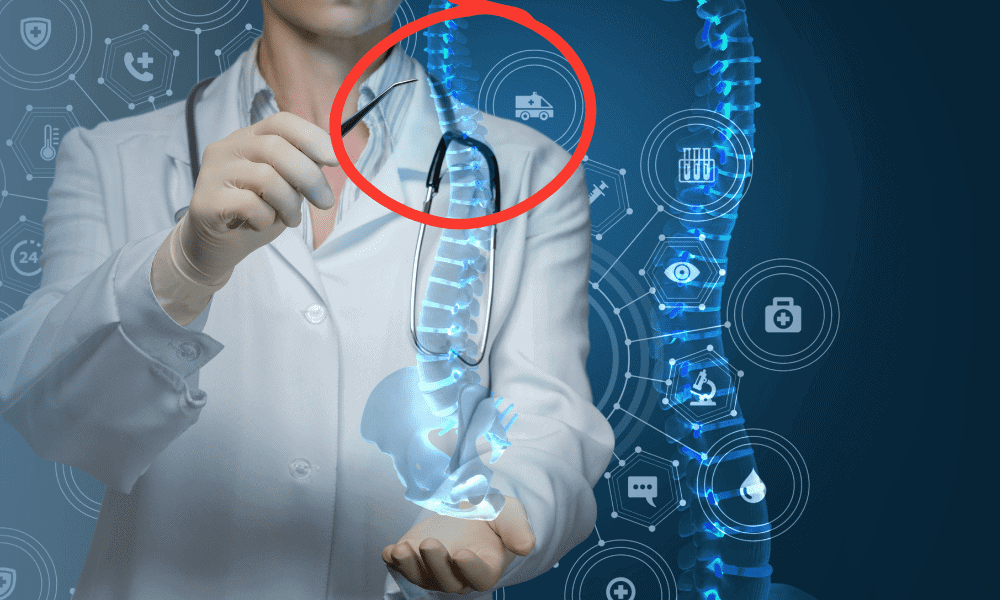Demystifying Thoracic Pain: A Comprehensive Guide to ICD 10 Classification
The presence of thoracic pain, as per the ICD 10 classification, denotes a broad spectrum of medical conditions. This guide aims to shine a light on understanding the thoracic pain ICD 10, covering the intricacies of diagnosis, management, and the journey towards recovery.
Understanding Thoracic Pain ICD 10
Thoracic pain refers to discomfort or pain experienced in the region of the thorax, which houses vital organs like the heart, lungs, and several important blood vessels. ICD 10, or the International Classification of Diseases, 10th edition, is a coding system that healthcare providers use to categorize and record diseases and health conditions. In the world of thoracic pain, understanding the ICD 10 classification is crucial for accurate diagnosis and treatment.
The Thoracic Region: Anatomy and Function
The thoracic region, encased within the thoracic cavity, comprises the thoracic vertebrae, ribs, sternum, and the organs within, including the heart and lungs. It’s pivotal to our body’s functionality, housing our cardiovascular and respiratory systems.
ICD 10: An Overview
The International Classification of Diseases (ICD) is a global standard for health condition reporting. The 10th edition, ICD 10, contains codes for diseases, symptoms, abnormal findings, complaints, and external causes of injuries or diseases.
Thoracic Pain in the ICD 10 Classification
In the ICD 10 system, thoracic pain is classified under the code R07.1, which includes symptoms such as chest discomfort and chest tightness.
Causes of Thoracic Pain
Thoracic pain can be attributed to a plethora of causes, from musculoskeletal disorders to severe cardiovascular issues. Understanding these root causes is the first step in effective management and treatment.
Musculoskeletal Causes
Conditions affecting the muscles, bones, and ligaments in the thoracic region can lead to thoracic pain. These may include muscle strain, fractured ribs, and osteoporosis.
Cardiovascular Causes
Cardiovascular issues such as heart disease, aortic dissection, and pericarditis can manifest as thoracic pain.
Respiratory Causes
Lung-related conditions like pneumonia, pleurisy, and lung cancer can also cause discomfort in the thoracic region.
Gastrointestinal Causes
Gastrointestinal problems like gastroesophageal reflux disease (GERD), stomach ulcers, and gallbladder disease can result in thoracic pain.
Diagnosing Thoracic Pain Using ICD 10
The process of diagnosing thoracic pain involves physical examinations, patient history, and potentially a series of tests. The ICD 10 classification system helps streamline this process.
Physical Examination and Patient History
A physician will first assess the patient’s condition through a thorough physical examination and medical history review.
Diagnostic Tests
Depending on the suspected cause, various diagnostic tests may be required, including X-rays, CT scans, MRI, EKG, or endoscopy.
Using ICD 10 for Diagnosis
Once the cause of thoracic pain is identified, the appropriate ICD 10 code is assigned. This facilitates tracking, statistical analysis, and ensures appropriate billing.
Treatment and Management of Thoracic Pain
The management of thoracic pain is tailored to the underlying cause. It may involve medication, physical therapy, or in severe cases, surgical intervention.
Pharmacological Treatment
Medications may include pain relievers, anti-inflammatory drugs, or condition-specific medication such as heart or lung disease drugs.
Physical Therapy
Physical therapy can be beneficial for musculoskeletal causes of thoracic pain. It includes exercises to strengthen the muscles and improve flexibility.
Minimally Invasive Treatment Options
In recent years, advancements in medical technology have introduced minimally invasive procedures that can effectively treat thoracic pain. These treatments offer less risk and faster recovery times compared to traditional surgery.
Radiofrequency Ablation and Medial Branch Block
Radiofrequency ablation is a procedure that uses heat generated by radio waves to target specific nerves and temporarily interfere with their ability to transmit pain signals. Medial branch block is an injection of a strong local anesthetic on the medial branch nerves that supply the facet joints. Both of these treatments can be used effectively to manage joint pain.
Kyphoplasty
Kyphoplasty is a minimally invasive procedure for treating painful vertebral compression fractures, which are often caused by osteoporosis. The procedure involves the insertion of a balloon into the vertebra, which is then inflated to restore the bone’s height. The cavity is then filled with a special cement to support the vertebra and alleviate pain.
Discseel® Procedure
The Discseel® Procedure is a novel treatment for leaky or degenerative disc disease. Using a natural, injectable biologic, the procedure aims to seal leaks in the discs, promoting healing and offering relief from pain. This procedure has shown promising results in patients who haven’t responded well to more conventional treatments.
Dr. Wiederholz is a pioneer in the field of minimally invasive spine treatments in Houston, having been personally trained by the inventor of the Discseel® Procedure, Dr. Kevin Pauza. Since 2020, Dr. Wiederholz has been at the forefront of this innovative treatment, making him the first in Houston to perform the Discseel® Procedure and establishing him as the leading local expert.
The Discseel® Procedure is a revolutionary treatment that offers a non-surgical solution to chronic back and neck pain. As a disciple of Dr. Pauza, Dr. Wiederholz has mastered the technique, providing patients with a safe, effective, and long-lasting relief from their pain.
Choosing Dr. Wiederholz for your Discseel® Procedure means choosing a physician who has trained under the best, and who is dedicated to delivering the highest standard of care. His expertise and commitment to patient wellbeing make him the trusted choice for those seeking to avoid surgery and improve their quality of life.
Surgical Intervention
In severe cases like heart disease or lung cancer, surgical intervention may be required. This can include procedures like bypass surgery for heart disease or tumor removal in the case of lung cancer.
Living with Thoracic Pain: Patient Experiences
Living with thoracic pain can be challenging but with the right treatment and lifestyle modifications, many individuals find relief and regain their quality of life.

FAQs
What does thoracic pain feel like?
Thoracic pain can vary in its presentation. Some people describe it as a sharp, stabbing pain, while others may experience it as a dull ache or burning sensation.
What is the ICD 10 code for thoracic pain?
The ICD 10 code for thoracic pain is R07.1. It includes symptoms such as chest discomfort and chest tightness.
Can thoracic pain be a sign of something serious?
Yes, thoracic pain can be a sign of serious conditions like heart disease or lung cancer. Therefore, any persistent or severe thoracic pain should be evaluated by a healthcare professional.
How is thoracic pain diagnosed?
Diagnosing thoracic pain involves a thorough physical examination, review of medical history, and potentially a series of tests such as X-rays, CT scans, or MRI.
What treatments are available for thoracic pain?
Treatment of thoracic pain depends on the underlying cause and may include medications, physical therapy, or in some cases, surgery.
Can thoracic pain be managed at home?
Yes, mild thoracic pain due to causes like muscle strain can be managed at home with rest, heat or cold therapy, and over-the-counter pain relievers. However, severe or persistent thoracic pain should be evaluated by a healthcare professional.
Conclusion
Thoracic pain, classified under the ICD 10 code R07.1, is a complex symptom with diverse underlying causes. By understanding the anatomy, potential causes, and ICD 10 classification, we can better navigate the path to accurate diagnosis and effective treatment. Always remember, your health is a journey, and each step you take brings you closer to wellness.
If you’re dealing with thoracic pain and are interested in exploring non-invasive or minimally invasive treatment alternatives, we can schedule a consultation with Dr. Matthias Wiederholz. He offers the Discseel® Procedure and other less invasive treatments in Houston, Texas, and Lawrenceville, New Jersey. Dr. Suzanne Manzi is also on hand for minimally invasive treatments in Houston and League City, Texas. Our professionals will collaborate with you to design a customized treatment strategy to help you return to your favorite daily activities.

















